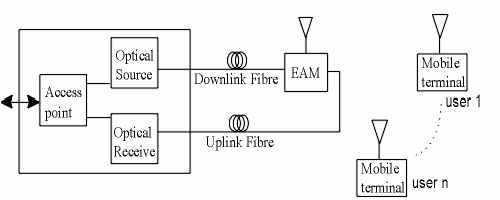![]()


The demand for high capacity, high speed real time communication in recent years has lead to the growing interest in development of radio on fibre technology. The passive picocell system is a radical new concept invented at BT laboratories, design for high capacity, short range, "unpowered" wireless networks of the future. The passive picocell system provides a favourable architecture for the third generation mobile communication systems. However, a major issue is the need to identify a low cost and compact antenna unit, assembled with the optical device which will require large number of units.


